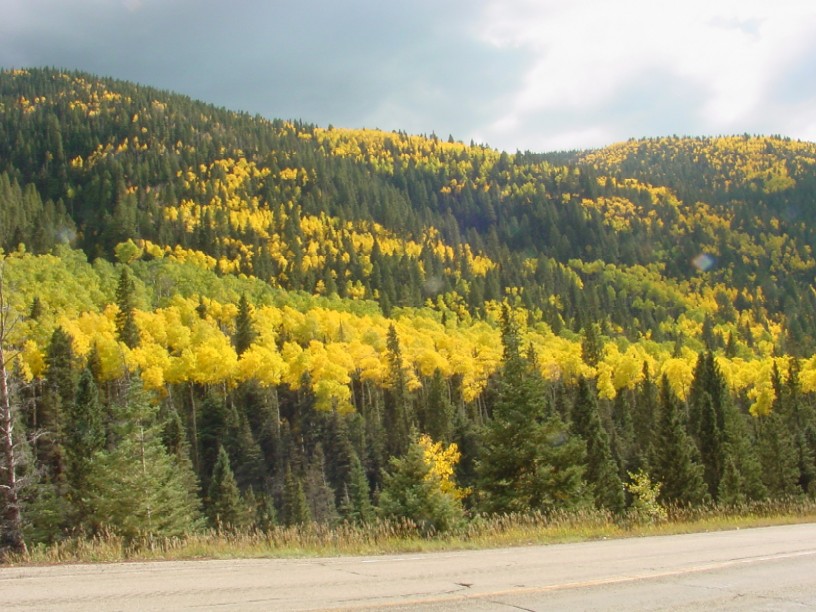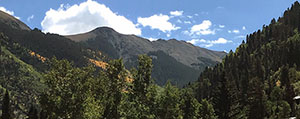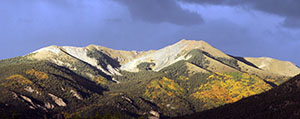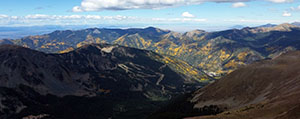Nature & Science
Enjoy Fall Colors at the Carson National Forest!

Spectacular Views
For spectacular views in the high country, consider hiking or packing into the Pecos, Latir, Wheeler Peak, Columbine-Hondo or Cruces Basin wilderness areas.
Carson National Forest Fall Colors from your Car
- Enchanted Circle Scenic Byway: Drive the 84-mile loop that goes through Taos, Questa, Red Red River, Eagle Nest, Angel Fire and back through Taos Canyon, with an option leg to the Taos Ski Valley. Learn more on Visit Taos.
- High Road to Taos Scenic Byway: The northern stretch of this byway is on the Carson National Forest. Visit New Mexico True for more information.
- Taos Ski Valley: Drive up Highway 150 to Taos Ski Valley or along one of the most beautiful stretches in the State - U.S. Highway 64 from Tres Piedras to Tierra Amarilla.
- Highway 64 in the San Juan Mountains: Head to the forest's west side and enjoy colors between Tres Piedras and Tierra Amarilla. Stop by Hopewell Lake midway.
Experience Fall Colors from the Train
Travel in style through sunlit aspen on the Cumbres & Toltec Scenic Railroad from Chama to Antonito.
About Aspen Trees
Aspen's radiant gold is brought to you by fires that raged through this part of the world a century ago. Aspen is the mother of the forest, usually the first tree species to appear after a fire or after logging. Aspen sprouts from suckers in the ground and as it grows, it shades the ground, allowing young fir and spruce to take hold. Once they do, the aspen falls over and dies, only to reappear once again after fire or logging.
Deer and Elk Need Aspen Too
Aspen offers autumn beauty but also keeps many deer and elk alive through harsh winters in the mountains. These animals eat leaves and new shoots on young aspen and the bark of taller trees. The Forest Service helps keep the aspen part of the forest by planned burning and selective logging in areas where deer and elk spend the winter.
Why Do Leaves Change Color?
During spring and summer, leaves serve as factories, manufacturing most of the foods necessary for a tree's growth. This takes place in the leaf cells that contain chlorophyll, which gives the leaf its green color. But leaves also contain orange and yellow pigments masked much of the year by green chlorophyll.
Autumn's shorter days and cooler nights halt the leaf's food manufacturing. Chlorophyll breaks down, exposing other pigments. Other chemical changes can happen, creating even more pigments - yellow, red, and blue - which you see in the red and purple of maples or the bronze or brown of oak and beech.

Also, colors on the same tree can vary from year to year, depending upon weather conditions. When autumns are warm and rainy, leaves are less colorful.
When leaves fall to the ground and decay, they help fertilize the soil, returning some elements borrowed by the growing tree.
Past Fall Colors on the Carson National Forest
Select an image or link to go to that year's fall color Flickr Album.
| 2018 | 2017 | 2016 |
|---|---|---|
 |
 |
 |


